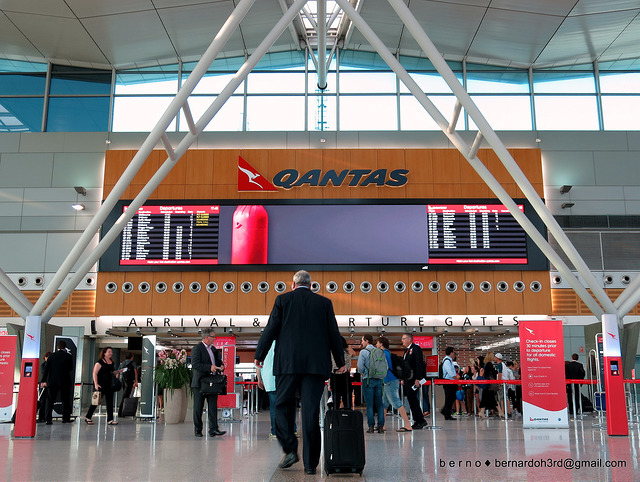Unlock the Magic in Your Story Now
Get the Free 20 questions to Ask Before Launching Your Idea workbook when you sign up for occasional updates.
Get the Free 20 questions to Ask Before Launching Your Idea workbook when you sign up for occasional updates.
Why You Should Choose Your Customers
filed in Marketing, Storytelling
 Marketing tactics often centre around finding customers for our products. We devote as much (sometimes more) time to generating enthusiasm for what we make, sell or serve as we do to making, selling and serving. It’s important to tell a story that resonates with the right customer. We do that by being clear about the worldview of the customer we want to attract.
Marketing tactics often centre around finding customers for our products. We devote as much (sometimes more) time to generating enthusiasm for what we make, sell or serve as we do to making, selling and serving. It’s important to tell a story that resonates with the right customer. We do that by being clear about the worldview of the customer we want to attract.
Choosing Your Customers:
- Allows you to be clear about the value you create.
- Gives you the opportunity to excel at serving the right people.
- Improves your marketing, sales and customer experience.
- Means you spend less time convincing customers and more time fulfilling their needs.
- Makes you more innovative because you see opportunities the generalist misses.
- Empowers you to build customer intimacy and loyalty.
- Helps you to become an expert in your field.
- Enables you to do your best work.
It’s as important to know who you’re not for as it is to understand the clients you would walk over hot coals to serve.
Image by Lennart Tange
Share this article
What’s More Important Than Noticing Trends?
 Enlightened entrepreneurs and visionary leaders don’t simply try to predict the next hit. They spend less time wondering about what people are interested in and more time caring about why people are drawn to it.
Enlightened entrepreneurs and visionary leaders don’t simply try to predict the next hit. They spend less time wondering about what people are interested in and more time caring about why people are drawn to it.
Yes, it’s important to notice trends, but it’s far more valuable to understand what’s driving them. When we know what motivates our prospective customers, we can spend more time making things that people want and less time trying to make people want the things we make.
Image by Maria Ekland
Share this article
What Do Your Customers Thank You For?
filed in Marketing, Storytelling
 As vulnerable humans, we’re brilliant at paying attention to threats in our midst. We are experts at mitigating against failure, which we trick ourselves into believing is the way to optimising for success. This tendency might explain our willingness to devote our resources to averting risk, solving problems and fixing mistakes.
As vulnerable humans, we’re brilliant at paying attention to threats in our midst. We are experts at mitigating against failure, which we trick ourselves into believing is the way to optimising for success. This tendency might explain our willingness to devote our resources to averting risk, solving problems and fixing mistakes.
When we focus on getting a near perfect score we sometimes overlook the opportunity to do more of what we already do well. It’s possible that regularly amplifying delight can produce better results than trying to avoid the random missteps that inevitably happen.
It’s just as important to pay attention to what makes your customers happy as it is to get to the bottom of complaints. What do you customers thank you for? Make a list. Then do more of that.
Image by Jeff Meyer
Share this article
The Responsive Vs. Reactive Business Conundrum
filed in Marketing, Storytelling, Strategy
 Every sustainable business was built in response to an unmet need. These responsive businesses endure because they evolve with the customer they intended to serve. The likes of fidget spinner manufacturers don’t count. You can rattle off a dozen responsive companies that have launched in the past two decades, particularly in the digital space. Brands like Airbnb, Alibaba, Amazon, Uber, Warby Parker and Zendesk have thrived because they solved real problems and built products and services people wanted and came to love.
Every sustainable business was built in response to an unmet need. These responsive businesses endure because they evolve with the customer they intended to serve. The likes of fidget spinner manufacturers don’t count. You can rattle off a dozen responsive companies that have launched in the past two decades, particularly in the digital space. Brands like Airbnb, Alibaba, Amazon, Uber, Warby Parker and Zendesk have thrived because they solved real problems and built products and services people wanted and came to love.
As startups and disruptors, responsive businesses begin on a level playing field strategically, what happens next depends on the path they take to achieve growth and scale. The companies that lose ground following some success are the ones that become reactive to the marketplace. Now, instead of staying true to their original intention to meet the needs of a customer with a particular worldview, the focus shifts to the competition. And bit-by-bit their priorities change and the strategy subtly shifts. Their ethos gets watered down. They start thinking, then behaving like their competitors, and they lose the edge that made them authentic, exciting and innovative—those qualities that attracted customers to them in the first place.
The business failures we witness at both local and global levels from Billabong to Kodak, are a result of a responsive business becoming reactive. Ironically the growth and scale we seek (no matter what size of company we run), happens when we remain true to our intention to do work we’re proud of in the service of people whose needs and desires are not being fulfilled. We’re witnessing a shift where incumbents like the big banks and chain stores also realise whoever gets (and stays) closest to their customer wins. Now more than ever, remembering and acting on that has got to be the number one priority for every business.
Image by Alan Levine
Share this article
You Can’t Mimic Your Way To Success
 The Louvre is the most visited art museum in the world. It welcomes more than seven million visitors each year. Six million of those visitors are there to see the world’s most famous work of art, the Mona Lisa. An estimated 16,000 visitors a day jostle in front of the 77 cm x 53 cm painting of Lisa Gherardini, many ignoring the other magnificent Venetian Renaissance masterpieces in the museum’s Salle des Etats.
The Louvre is the most visited art museum in the world. It welcomes more than seven million visitors each year. Six million of those visitors are there to see the world’s most famous work of art, the Mona Lisa. An estimated 16,000 visitors a day jostle in front of the 77 cm x 53 cm painting of Lisa Gherardini, many ignoring the other magnificent Venetian Renaissance masterpieces in the museum’s Salle des Etats.

We live in a culture of comparison. This is an era where it’s not only possible to see what everyone else is thinking, saying and doing—it’s almost impossible to avoid exposing yourself to other people’s game plans. Doing what worked for someone that’s gone before you feels less risky. While mimicry can feel like the safe option, I’d argue that it’s not going to help you to do the work you’re most proud to have done.
In a world of comparison, originality is underrated. Breakthroughs depend on a person or group of people with a particular set of skills and perspectives, at a unique moment in time, turning left when everyone else is going right. It’s impossible to replicate those circumstances. People are not craving the next Mona Lisa, and they’re not waiting for the new Banksy. They are looking for someone who can lead with their unique voice and vision to create the future we want to see.
It’s better to aim for doing work that matters to you for the people you care about serving than to invest your time retracing someone else’s path to success. So apply your blinkers and reflect on what it is that you can change in your way instead. Your time and your gifts are too precious to waste on becoming a carbon copy.
Images by Thomas Ricker and Brett Davis
Share this article
Design Your Business For The Outcome You Want
filed in Marketing, Storytelling, Strategy
 Think about a delighted customer and the ten people she will interact with today.
Think about a delighted customer and the ten people she will interact with today.
What’s the story you want that customer to share with someone about you, your product or service?
How do you want them to describe the change you enabled?
What words do you want them to use?
How do you want them to feel?
Now think about all of the things you spent your time on today.
Are the things you’re working on helping you to get to the place you described above?
What needs to change for you to get to where you want to go?
Image by Andrey
Share this article
A Simple Way To Think About The Value You Create
 When it comes to communicating our value, we begin by describing the features and benefits of what we make, serve or sell. That’s why we often end up with a laundry list of claims that our competitors could make.
When it comes to communicating our value, we begin by describing the features and benefits of what we make, serve or sell. That’s why we often end up with a laundry list of claims that our competitors could make.
There is an alternative. Flip this thinking on its head and reflect on what would happen if your product or service didn’t exist. What would the customer’s world look like without you and your particular way of working or serving?
Try telling that story.
Image by Daniel Lee
Share this article
The Two Questions At The Heart Of Great Marketing
filed in Marketing, Storytelling, Strategy
 The kind of marketing we practice is a result of what we’re most curious to know about our customers. Many marketing campaigns are created by asking the following questions:
The kind of marketing we practice is a result of what we’re most curious to know about our customers. Many marketing campaigns are created by asking the following questions:
A. What will they buy?
B. How can we get them to buy?
The resulting tactics become about near-term targets, buying more attention and competing on price. The brands that succeed in telling stories that resonate start by asking different questions:
A. Why do they buy?
B. How do they buy?
Successful brands like IKEA and ZARA started with the right questions. Their marketing strategy centres around long-term goals, creating loyalty and building brand equity. They care enough to do the hard work of anticipating the customer’s needs and fulfilling her sometimes unspoken desires.
We get to decide what questions are worth asking.
Image by Marcus Linder
Share this article
We Are The Culture
 Culture is all around us. Our shared values and beliefs are palpable in the places we visit and the people we meet. We absorb those values from the media we consume and the ideas we expose ourselves to. One of the best ways I know to witness how we can shape our culture is to take a taxi ride in a new city.
Culture is all around us. Our shared values and beliefs are palpable in the places we visit and the people we meet. We absorb those values from the media we consume and the ideas we expose ourselves to. One of the best ways I know to witness how we can shape our culture is to take a taxi ride in a new city.
Every vehicle has a distinct culture that’s created by the driver’s posture. It starts with how the driver dresses and the conversation he or she makes. It’s heavily influenced by the cleanliness of the car and the kind of music the driver plays. And of course, it’s dependent upon his or her attitude to other motorists and how each driver finds meaning in their work. The environment can soothe or agitate, demotivate or inspire.
In taxis on every continent around the world, you can encouter zen and mala beads, negative news channels on the radio accompanied by rude hand gestures out the window. You will meet people who find dealing with passengers a chore and many more who are grateful for work and the feeling of autonomy.
In our communities and businesses, we often lament over our lack of control. We get despondent about what can’t be done to change things—all the while overlooking the endless opportunities we have to change everything. We are the community, the business and the culture. We are the makers and the making of the entities and places that shape our world.
We are more powerful than we think.
Image by MF Poon
 Everyone was surprised to hear the longer than usual customer service announcement as we were preparing to land in Los Angeles. Many people on board were catching connecting flights to different cities in Australia, and there’s always a little anxiety amongst passengers who are trying to make those connections. The typical announcement informs passengers to check the departures board or see the ground crew on arrival at the gate. This one was different.
Everyone was surprised to hear the longer than usual customer service announcement as we were preparing to land in Los Angeles. Many people on board were catching connecting flights to different cities in Australia, and there’s always a little anxiety amongst passengers who are trying to make those connections. The typical announcement informs passengers to check the departures board or see the ground crew on arrival at the gate. This one was different.